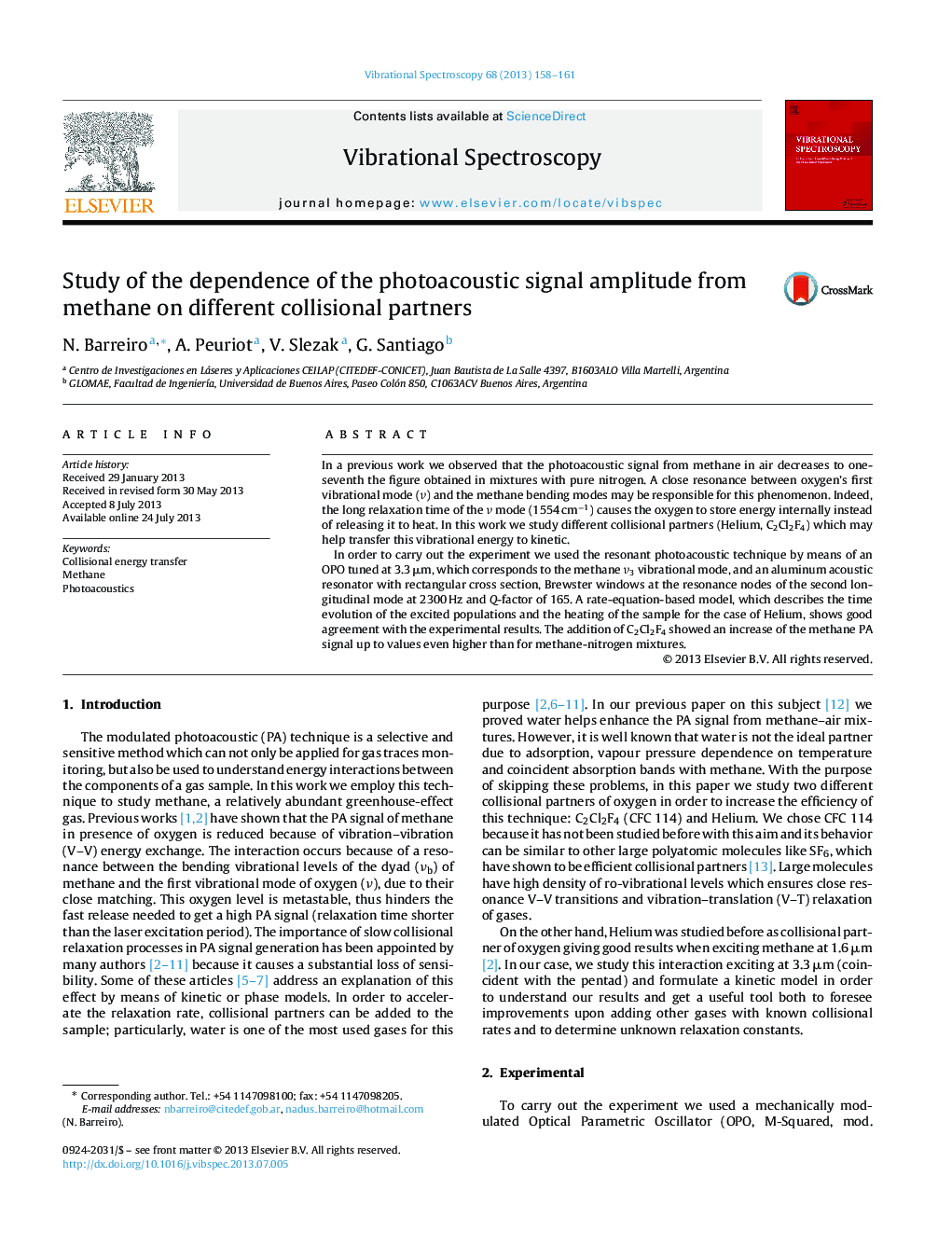| Article ID | Journal | Published Year | Pages | File Type |
|---|---|---|---|---|
| 1250177 | Vibrational Spectroscopy | 2013 | 4 Pages |
In a previous work we observed that the photoacoustic signal from methane in air decreases to one-seventh the figure obtained in mixtures with pure nitrogen. A close resonance between oxygen's first vibrational mode (ν) and the methane bending modes may be responsible for this phenomenon. Indeed, the long relaxation time of the ν mode (1554 cm−1) causes the oxygen to store energy internally instead of releasing it to heat. In this work we study different collisional partners (Helium, C2Cl2F4) which may help transfer this vibrational energy to kinetic.In order to carry out the experiment we used the resonant photoacoustic technique by means of an OPO tuned at 3.3 μm, which corresponds to the methane ν3 vibrational mode, and an aluminum acoustic resonator with rectangular cross section, Brewster windows at the resonance nodes of the second longitudinal mode at 2300 Hz and Q-factor of 165. A rate-equation-based model, which describes the time evolution of the excited populations and the heating of the sample for the case of Helium, shows good agreement with the experimental results. The addition of C2Cl2F4 showed an increase of the methane PA signal up to values even higher than for methane-nitrogen mixtures.
